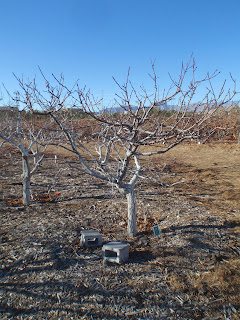Q.. I
am writing you to find out how often should I be watering my trees and shrubs.
The weather got hot so quickly that I’m really not sure when to water. I have a
California Pepper Tree, 2 palm trees (a canary date and a Mediterranean fan )
and 5 Japanese boxwood shrubs. Any help you can give me is appreciated .
A. There are two questions that need
answering: how many minutes to water each time and secondly how often.
 https://wateruseitwisely.com/100-ways-to-conserve/landscape-watering-guide/plant/
https://wateruseitwisely.com/100-ways-to-conserve/landscape-watering-guide/plant/
The number of gallons of water given to a plant depends on its size; small trees are watered 18 inches deep, medium-size trees 24 inches deep and large trees 36 inches deep.
Establishing the Number of Minutes
The
number of minutes depends on the soil you have and how big the tree is. Small
trees are watered 18 inches deep. Medium-size trees are watered 24 inches deep.
Large trees are watered 36 inches deep. Always apply the water to wet the soil
at least half of the area under the tree's canopy. Small trees are less than 20
feet tall. Medium-size trees are 20 to 35 feet tall. Large trees are above 35
feet tall.
Your soil and how big the tree is so I
can tell you the number of minutes. You have to figure that out for yourself.
To do that I use a 3/8 inch diameter rebar 4 feet long. If the water didn't go deep enough, water more minutes until you get there.
 |
| A 4 foot length of three-eighths inch rebar I use for measuring how deep water penetrates in the soil after an irrigation. |
Right after I irrigate
I push this rebar into the soil in three locations, where the soil is wet, as
deep as I can. The rebar pushes in easily if the soil is wet. When the water
doesn't go any deeper and the soil isn't wet anymore it's hard to push.
Watering How Many Times A Week
Each time I water I use the number of
minutes it takes to get the water to that depth. That doesn't change. What
changes is how many times I water each week. This is for non-desert plants.For desert plants water less often but give them the same amount of water as I mentioned above.
Winter months every 10 days or more
Starting February 1 every seven days
About mid April twice a week
About June 1 three times a week
In the wintertime I water to that
depth about every 10 days or longer. About February 1 I start watering once a
week. Around the middle of April I water twice a week. Around 1 June I start
watering three times a week. If it gets really hot I might water four times a
week. A 3 to 4 inch layer of woodchips or rock helps keep the soil wet. I only
use rock with trees that come from the Southwest deserts. All the rest of the
trees I use woodchips.
By the way, none of the plants you mentioned in your question are desert plants.



